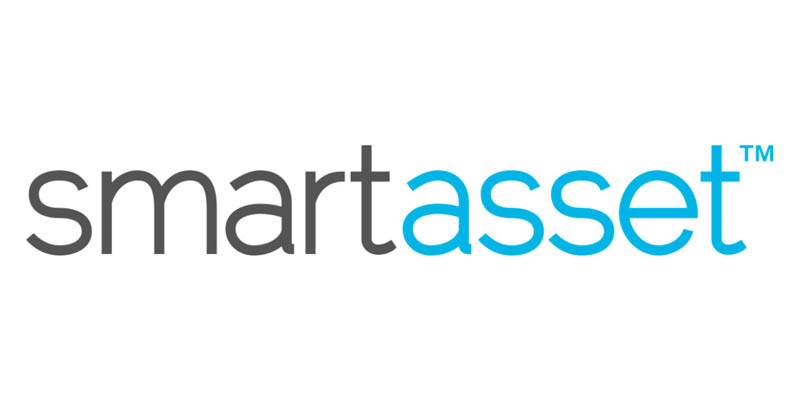Key Takeaways:
- The age for taking required minimum distributions (RMDs) increased to 73 in 2023. This will increase again in 2033 to 75. Meanwhile, the penalty for not taking an RMD decreased to 25%.
- Starting in 2025, some part-time employees will be able to access 401(k) plans.
- Employers can contribute to Roth accounts, student loan payments, and emergency savings plans.
- Other changes include expanding the definition of “earned income” to provide additional benefits to students and foster care parents and IRA withdrawal provisions for domestic abuse victims.
- Starting in 2027, the federal government will match eligible retirement contributions; it’s estimated that nearly 22 million Americans could qualify for the Saver’s Match provision.
The SECURE Act, signed into law December 20, 2019, was the first overhaul of retirement savings plans in more than a decade. Just three years later, Congress passed the SECURE 2.0 Act with 90+ provisions that further helped both Americans in or nearing retirement and those planning for retirement.
The provisions are meant to combat the ongoing retirement crisis in the U.S. For instance, 50% of women and 47% of men between 55 and 66 have no retirement savings at all, according to the U.S. Census Bureau. And with constant whispers of Social Security benefits drying up, Americans desperately need help planning for retirement.
How did the SECURE 2.0 Act aid Americans in 2023, what’s in store in 2024, and what further provisions are planned for 2025 and beyond? We’ll break down many of the biggest provisions—and how they affect you—below.
More Retirement Savings for Lower-Income Americans
Scheduled to take effect in 2027, the Saver’s Match Provision will help almost 22 million lower-income Americans boost their retirement savings and help create long-term financial stability. The federal government will match 50% of contributions up to $1,000 in retirement qualifications for those who qualify.
To qualify, individuals must contribute to a defined contribution plan or an individual retirement account (IRA). Single workers earning up to $20,000 and married couples with incomes up to $41,000 are eligible for the full match. The government will match a portion of this for higher incomes, up to $35,000 for singles and $70,000 for married couples filing jointly.
This comes as a February 2024 study from the Transamerica Center for Retirement Studies found that more than half of workers (53%) are unaware of the current IRS Saver’s Credit, which gives a tax credit of up to $2,000 for mid- and low-income taxpayers who contribute to a retirement account.
The SECURE 2.0 Saver’s Match will replace the Saver’s Credit, replacing a tax refund credit with a federal matching contribution that must be deposited into a taxpayer’s IRA or retirement plan. The match program will equal 50% of contributions, meaning individuals can add up to $2,000 to their IRA or retirement plans.
For Current Retirees
If you have already retired or are nearing retirement age, several SECURE 2.0 Act changes could impact your finances.
Ages and Penalties for Required Minimum Distributions (RMDs)
As a result of the SECURE Act, the age for taking required minimum distributions (RMDs) increased from 70½ to age 72. SECURE 2.0 changed the age to 73 in 2023. This will increase again in 2033 to 75.
The penalty for failing to take a required minimum distribution has decreased with the SECURE 2.0 Act, however, from 50% to 25%.
Starting in 2024, employees will not be required to take RMDs from Roth accounts during their lifetime.
Catch-Up Contributions
There won’t be any updates to catch-up contributions for 2024, but 2025 brings in some important changes for Americans in their early 60s, and 2026 will usher in even more monumental changes that affect how you plan for your impending retirement.
- In 2025, people ages 60 to 63 will be able to make up to $10,000 in catch-up contributions to a workplace retirement plan, such as a 401(k) or 403(b). The $10K amount will be indexed to inflation.
- In 2026, anyone 50 and older who’s above a minimum income threshold ($145,000) will be required to make all catch-up contributions to a Roth (post-tax) account. This does not impact anyone whose income is under $145,000.
The current catch-up contribution is $1,000, and it will be adjusted for inflation in 2024.
Qualified Charitable Distributions (QCDs)
Starting in 2023, the SECURE 2.0 Act enabled those 70½ and older to gift up to $50,000 of their $100,000 annual QCD limit to a charitable gift annuity, charitable remainder trust, or charitable remainder unitrust. That $50K amount will also be adjusted in future years for inflation.
Roth Matching
Before, employees could only receive matching contributions from an employer in a sponsored plan on a pre-tax basis. However, with SECURE 2.0, companies will be able to match contributions to Roth accounts, if the employee prefers. This change is already in effect.
For People Planning For Retirement
It’s important to pay attention to the SECURE 2.0 changes taking place, even if you’re not close to retirement. The provisions in the updated act can impact your finances today — and how you save for retirement in the future.
Student Loan Debt Payments
Student loans continue to be a huge financial burden on the average American family—and they make it much more challenging to save for retirement. Starting in 2024, SECURE 2.0 lets companies match an employee’s student loan payment each month, similar to how an employer might match a 401(k) contribution.
Emergency Savings
Employers can also offer further assistance to employees through new provisions on company-sponsored retirement plans. Beginning in 2024, employees will be able to add an emergency savings account to a contribution retirement plan. Under the current guidelines, employees could contribute up to $2,500 each year, and the first four withdrawals in each year are free of taxes and penalties.
Even better? These emergency savings contributions could be eligible for an employer match, if the employer decides to offer this as a benefit. Having an emergency fund is an important tool for maintaining financial stability in retirement—and while you’re still working.
Automatic Enrollment
Beginning in 2025, any companies implementing a new retirement plan, such as a 401(k) or 403(b), will be required to automatically enroll employees at a 3% contribution rate. SECURE 2.0 also makes it easier to transfer low-balance retirement accounts when an employee changes jobs, removing the temptation to simply cash out the retirement savings.
529 Plan Rollovers
SECURE 2.0 now allows individuals to roll their unused 529 plan funds into a Roth IRA. This has a lifetime limit of $35,000 and is subject to annual Roth contribution limits. To ensure beneficiaries don’t simply roll the money into an IRA without considering their education needs, the 529 plan needs to be at least 15 years old.
Long-Term Part-Time Employees
SECURE 2.0 builds upon previous legislation that benefits part-time employees. Under the updated provisions, part-time employees who have been with a company for two years and worked at least 500 hours will get access to a 401(k), starting in 2025. (As of now, it’s three years.) In addition, 2025 will bring 403(b) plans into the fold.
Other Special Considerations
The original SECURE Act and the new SECURE 2.0 include other important provisions as well:
- Withdrawal Provision for Adoption or Birth: The SECURE Act allows a parent to withdraw $5,000 from an IRA to cover the cost of birth or adoption. Married parents with separate IRAs can each withdraw $5,000, and there’s no early-withdrawal penalty. Taxes are still due on the distribution unless paid back. Amounts paid back into the account are treated as rollovers and not included in taxable income.
- New Earned Income Definitions for Students and Foster Care Providers: The SECURE Act expanded the definition of earned income for graduate or postdoctoral students. These individuals can include taxable fellowships or grants used for higher education costs in their earned income. The same rule applies to foster care providers who receive difficulty-of-care payments. This rule allows these individuals to make deductible contributions to a traditional IRA.
- Provision for Domestic Abuse Victims: If you are the victim of domestic abuse, you can withdraw up to $10,000 from your IRA or 401(k) under the age of 59½ without paying any penalties.
Bottom Line
The myriad provisions within the SECURE 2.0 Act can be confusing, and the legislation is a living, breathing thing—meaning more changes are coming. To ensure you properly plan for retirement and then manage your finances in retirement, we recommend working with a trusted financial advisor near you.
The SECURE Act provides many new rules to make growing retirement savings easier. However, some provisions of the act require investors to rethink their retirement plans. Those who planned to gift an IRA to an individual or charity should meet with a financial professional. Some will need to determine if they must amend their will, trust or other arrangements.



